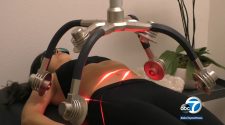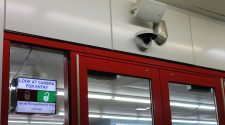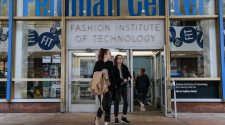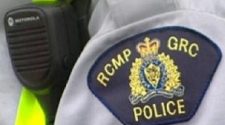SPOTSYLVANIA, Va. – Students watched in amazement as oxygen liquefied and a zinc penny snapped in half when Michael Young demonstrated the effects of liquid nitrogen.
Young – the director of academic engagement at Naval Surface Warfare Center Dahlgren Division (NSWCDD) – was among a contingent of NSWCDD leaders, scientists and engineers who joined a myriad of organizations to engage students with science, technology, engineering, mathematics (STEM) demonstrations at the ninth annual STEM Summit open to the public at Chancellor High School, Feb. 29.
“I want to thank all of the students and parents who came out to explore science, technology, engineering, math – STEM,” said NSWCDD Commanding Officer Capt. Casey Plew, the event’s keynote speaker. “Participating in STEM education is a valuable investment in both your future as well as society’s future. Did you know you and your parents use technology developed through STEM every single day? And some of that technology came from people who worked at Dahlgren.”
Plew cited the global positioning system as an example of technologies developed at NSWCDD.
“The contributions of Dr. Gladys West – a mathematician and former Dahlgren employee who began her career in the 1950’s – led to the creation of something we use all the time,” said Plew. “Can anyone guess what it might be?”
The NSWCDD commanding officer answered his question.
“Global positioning system – GPS – for all of those maps in your cars and phones that tell you how to get places,” Plew said. “Math class!”
West used mathematics to determine the exact location of satellites and worked on computer software that processed geoid heights, or the earth’s precise surface elevations. The work she did eventually led to the creation of GPS. In a 2011 interview, West said, “I feel like I made a real good contribution to the accuracy of the Global Positioning System.”
Plew also described technologies developed at Dahlgren that require STEM – electric weapons and cybersecurity engineering – while speaking to his audience of students, parents and teachers.
Before students explored STEM at the summit, they listened to Plew’s parting remarks and enthusiastically accepted his challenge.
“Soak up the awesomeness of all of the different STEM efforts displayed for you,” Plew challenged the students. “And get excited. One day, someone could be telling a future group of students about something amazing you developed – and it all started with you getting engaged in STEM at school.”
Students from grades K-12 had the opportunity to see “what STEM is and does” throughout the summit. Many who engaged in STEM activities inside the school, stepped outside to operate a Sea Perch Remotely Operated Vehicle (ROV).
SeaPerch is an innovative underwater robotics program that equips teachers and students with the resources they need to build an underwater ROVs in an in-school or out-of-school setting. The outreach helps young people learn about STEM – along with several intangible life skills – by building and competing with ROVs.
At the NSWCDD demonstrations from Sea Perch to liquid nitrogen, students learned that STEM expertise and civilian careers are vital to protecting U.S. warfighters, military operations and homeland defense.
SeaPerch provides students with the opportunity to learn about robotics, engineering, science and mathematics while building an underwater remotely operated vehicle as part of a science and engineering curriculum. Throughout the SeaPerch project, students learn engineering concepts, problem-solving techniques, teamwork and technical applications, all culminating in an end-of-the-term design competition. This program teaches students how to build an underwater robot, build a propulsion system, develop a controller, and investigate weight and buoyancy.
At the Chancellor High School STEM Summit, elementary, middle and high school students saw how STEM is fun, fascinating and socially relevant while gaining an understanding on how robotics and testing materials via methods such as liquid nitrogen impacts technological development and real-world situations.
In addition to the Dahlgren demonstrations, a robot who will soon teach computer coding at the Central Rappahannock Regional Library, danced and spoke with students at the event. Visitors also interacted with from Spotsylvania High School’s Girls Go CyberStart group, Massaponax High School engineering students, a U.S. Air Force flight simulator, and an automobile driving simulator. What’s more, students from the Dahlgren Robotics Club showed off the robots they built and programmed to perform a variety of tasks.
The Department of the Navy provides learning opportunities from elementary school through graduate school to inspire and cultivate a diverse pool of exceptional STEM talent. Navy programs connect STEM education in the classroom to the excitement, skills, and challenges that come with safeguarding the United States.
NSWCDD supports the Navy’s STEM efforts by participating in a variety of STEM program areas.

















